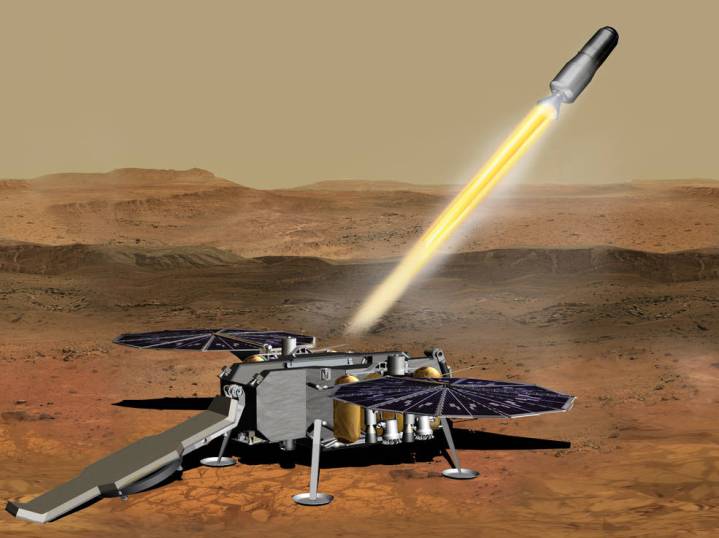NASA’s Perseverance rover has yet to collect any rock and soil on the red planet, but the space agency already is working hard on the Mars Sample Return (MSR) mission so it can bring any samples it collects to Earth.
The space agency this week announced it has awarded the Mars Ascent Propulsion System (MAPS) contract to Virginia-based Northrop Grumman for the development of a Mars Ascent Vehicle (MAV), a critical part of the effort to bring samples collected by Perseverance to Earth.
Worth up to $84.5 million, the contract will see Northrop Grumman provide mission apparatus for NASA’s Marshall Space Flight Center in Huntsville, Alabama, which is responsible for the MSR mission’s MAV element.

Perseverance, which arrived on the Martian surface a couple of weeks ago, will spend the next two years exploring inside Jezero Crater for signs of past life.
Should the rover come across any rock and soil samples of interest, the plan is to cache them for transportation to Earth as part of the MSR mission. Scientists will then be able to examine the material more closely.
Of course, getting the samples off Mars and all the way here will be no easy feat. Cutting-edge technology will be required to meet the challenge, with Northrop Grumman now selected as one of the key players.
The MSR mission will require four elements: A lander to set down on the Martian surface, a rover that will leave the lander to collect the samples cached by Perseverance, an ascent vehicle to get the samples into Mars orbit, and a spacecraft to receive the material for transportation to Earth.
NASA is working with the European Space Agency on the ambitious MSR mission, which isn’t likely to take place until some time in the early 2030s.
“Bringing Mars samples back to Earth will allow scientists across the world to examine the specimens using sophisticated instruments too large and too complex to send to Mars, and will allow future generations to study them using technology not yet available,” NASA said this week. “Curating the samples on Earth will allow the science community to test new theories and models as they are developed, much as the Apollo samples returned from the moon have done for decades.”
Missed news of Perseverance’s dramatic arrival on Mars last month? Then check out this astonishingly clear footage of the rover’s precarious landing on the distant planet.


